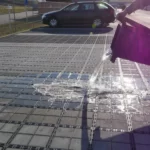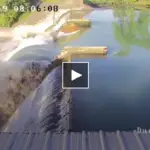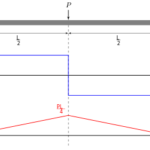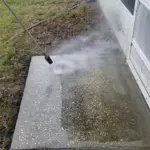Hydropower is often hailed as one of the cleanest and most efficient ways to generate renewable energy, using the natural power of flowing water to produce electricity. However, behind this green energy source lies a more complex story—one that affects aquatic life, particularly fish populations, and the ecosystems surrounding rivers.
In this article, we’ll dive deep into how hydropower dams impact fish and what happens to these aquatic creatures when they encounter the massive barriers created by dams. Can they survive? And what are the broader ecological consequences?

How Dams Disrupt Fish Migration
One of the biggest challenges fish face with hydropower dams is the obstruction of natural river flows. Many fish species, like salmon, rely on migrating upstream to lay eggs in freshwater environments. Dams, unfortunately, act as a giant wall, preventing them from reaching their critical breeding grounds.
Some dams have tried to mitigate this problem by installing fish ladders, a series of steps that help fish bypass the dam. While these structures seem like a good solution, they are far from perfect. Not all fish manage to use them successfully, and many dams don’t even include these systems. As a result, a significant number of fish are left stranded, unable to complete their natural life cycle.
The Deadly Journey of Juvenile Fish
The dangers for fish don’t end with adults. Baby fish, known as “fry,” face their own challenges when migrating downstream. As they head back to the ocean, they encounter the dam’s massive turbines, which are designed to generate electricity but also inadvertently harm or kill fish. Fry that are sucked into these turbines often face severe injury or death, and even those that survive are left injured, struggling to thrive in their new environment.
While some dams attempt to prevent fish from being sucked into the turbines by installing protective screens, these measures often fall short. Smaller fish still manage to slip through, putting their survival at risk.
Sudden Water Releases and Their Impact
In addition to turbines, another major danger for fish occurs when water is released downstream. Dams typically release water in large, sudden bursts, creating a surge that can sweep fish away. While some fish may survive by passing through spillways, many do not, and those that do often suffer serious injuries from the violent current or from hitting structures downstream, such as stilling basins, which are designed to slow the flow of water.
Ecosystem Disruption
The effects of dams aren’t limited to fish. They also disrupt the entire river ecosystem. Rivers are dynamic systems where the flow, temperature, and sediment distribution are crucial to maintaining a healthy environment for aquatic plants and animals. Dams interrupt these natural processes, trapping sediment behind their walls and creating reservoirs where water becomes warmer than the original river, which can harm species that depend on cooler water temperatures.
Furthermore, the lack of sediment flow downstream deprives river ecosystems of vital nutrients, causing downstream habitats to degrade.
Like Us on Facebook!
Declining Fish Populations and Extinction
One of the most tragic consequences of dams is the decline in fish populations. Species like salmon, which are already vulnerable due to migration challenges, have been particularly hard-hit by the construction of dams. In some regions, like the Pacific Northwest, salmon populations have been steadily declining for years, even with fish ladders and bypass systems in place.
Subscribe Us on YouTube!
The impact goes beyond individual species. Since 1900, more than 120 freshwater species in North America have gone extinct, with dams being a significant contributing factor. Freshwater species are disappearing at a rate five times faster than land-based species, making rivers some of the most stressed ecosystems on the planet.
The Balance Between Clean Energy and Environmental Impact
Despite the negative impact on fish populations and ecosystems, hydropower remains an important source of clean energy. It generates electricity without emitting greenhouse gases, which is a crucial advantage in the fight against climate change. However, the trade-offs are significant, particularly when it comes to the damage caused to river ecosystems.
What Can Be Done?
Experts are exploring various solutions to mitigate the impact of dams on fish and ecosystems. One option is to remove old or inefficient dams to restore natural river flows, giving fish populations a chance to recover. In fact, some dams in the U.S. have already been removed, with positive results for local fish populations and ecosystems.
Another approach is to improve fish passage systems or redesign dams to be more environmentally friendly. While these solutions may not entirely eliminate the negative impact of dams, they can help strike a better balance between generating clean energy and protecting river ecosystems.
Conclusion
Dams, while critical for producing renewable energy, come with significant ecological consequences, particularly for fish populations. The disruption to fish migration, the dangers posed by turbines, and the broader environmental changes caused by dams highlight the need for more sustainable and fish-friendly solutions. As we continue to rely on hydropower, finding ways to minimize its impact on rivers and aquatic life will be crucial for maintaining healthy ecosystems.





















